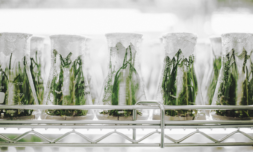In a bid to address vaccine nationalism, pop-up vaccine factories resembling shipping containers are set to appear in developing countries.
If you’ve forgotten about the vaccine rush that happened back in 2020, you’re probably living in a nation that hoarded a bunch of the supply.
While many of us are looking to have, or already have had our booster shot for the year, there are millions who’ve yet to receive any genuine protection against the virus.
Africa has long been at the back of the line where access to COVID-19 vaccines is concerned. Lacking the funding and infrastructure of its western equivalents, the recovery process has yet to gather any real momentum throughout the continent.
Only 14% of residents in Ghana have been fully vaccinated, for example, compared to 75% in Berlin – the key difference between the two, being that one can erect vaccine facilities taking up multiple stories and 20,000+ square feet, whilst the other just can’t.
The disparity isn’t just relevant to vaccine distribution either. For decades, just 1% of vaccines have been manufactured locally in Africa, and this is why new variants develop and spread throughout (and far beyond) the region.
So, what’s being done to protect developing countries from COVID-19 and future viruses that may rear their head in the future?
At a high-level meeting in Marburg we introduced a turnkey #mRNA manufacturing solution called #BioNTainer for scalable vaccine production in Africa. We are working with our country partners& @WHO, @AfricaCDC, AMA and @EU_Commission to establish end-to-end manufacturing network pic.twitter.com/dcQmRVkVJt
— BioNTech SE (@BioNTech_Group) February 16, 2022
The beginnings of mobile vaccine factories
The novel idea of developing pop-up vaccine facilities in the west and later moving them to developing countries has long been weighed up, but only now is it close to materialising.
A German company called BioNTech has developed a design far less expensive than building a state-of-the-art factory, and easier to transport piece by piece across borders.
Made up of 12 stacked shipping containers, the adaptable structure of the ‘Biontainer’ is large and filled with sophisticated vaccine technology akin to that of leading developers.
Within these mobile laboratories, BioNTech plans to give local scientists – trained by partner companies in whatever region – a place to exercise their own vaccine production lines. They will also organise rotas to get vaccines into vials, and eventually into arms.
Though COVID-19 will obviously take precedence to begin with, the wider vision is to develop vaccines for other viral menaces. BioNTech will collaborate with scientists to form vaccines for malaria and tuberculosis on the ground, once the labs begin widescale manufacture in 2023.
Given that’s still a fair way off, what can be done in the meantime?
President Kagame has arrived in Marburg, Germany for the high-level BioNTech Vaccine Equity for Africa meeting, alongside BioNTech CEO Uğur Şahin, President @Macky_Sall and President @NAkufoAddo. pic.twitter.com/DQI98pmIWx
— Presidency | Rwanda (@UrugwiroVillage) February 16, 2022




















